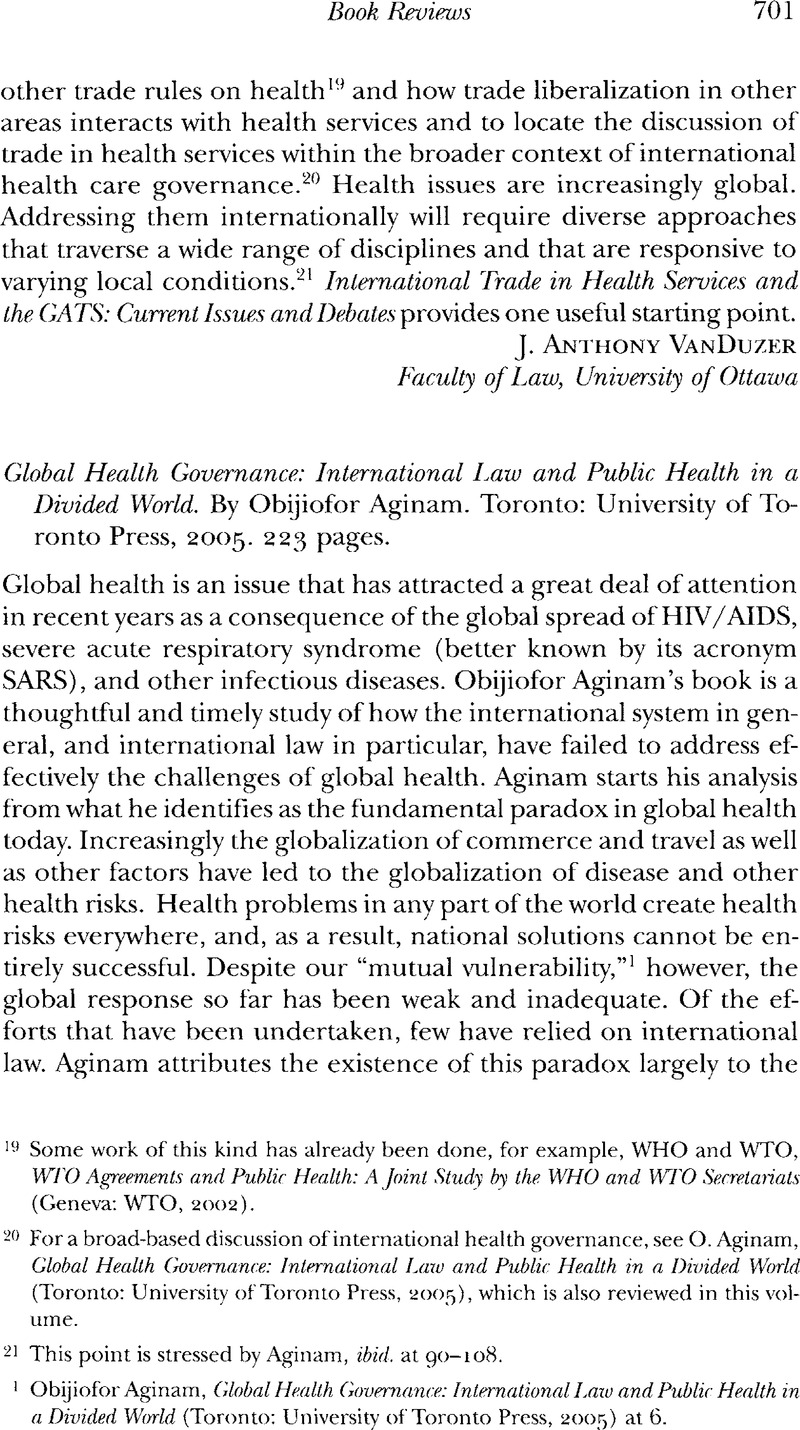No CrossRef data available.
Article contents
Global Health Governance: International Law and Public Health in a Divided World. By Obijiofor Aginam. Toronto: University of Toronto Press, 2005. 223 pages.
Published online by Cambridge University Press: 09 March 2016
Abstract

- Type
- Book Reviews / Recensions de livres
- Information
- Canadian Yearbook of International Law/Annuaire canadien de droit international , Volume 43 , 2006 , pp. 701 - 706
- Copyright
- Copyright © The Canadian Council on International Law / Conseil Canadien de Droit International, representing the Board of Editors, Canadian Yearbook of International Law / Comité de Rédaction, Annuaire Canadien de Droit International 2006
References
1 Aginam, Obijiofor, Global Health Governance: International IMXU and Public Health in a Divided World (Toronto: University of Toronto Press, 2005) at 6.CrossRefGoogle Scholar
2 Ibid, at 34.
3 Ibid, at 56–57.
4 Ibid, at 6.
5 Ibid.
6 Aginam also characterizes the legacy of the nineteenth-century origins of international law as including an entrenched colonial attitude.
7 Aginam, supra note 1 at 73.
8 Aginam refers, for example, to the Montreal Protocol on Substances That Deplete the Ozone Layer, in force l January 1989, (1987) 26 I.L.M. 1550 at 86.
9 Aginam, supra note 1 at 92. Aginam borrows this concept from Falk, R., Law in an Emerging Global Village: A Post-Weslphalian Perspective (New York: Transnational, 1998) at 29.Google Scholar
10 Ibid.
11 Blouìn, C., Drager, N., and Smith, R., eds., International Trade in Health Services and the GATS: Current Issues and Debates (Washington, DC: World Bank, 2006),Google Scholar which is also reviewed in this volume, may be an example of the inter-agency cooperation that Aginam is talking about. This study is a joint project of the World Bank and the World Health Organization.
12 There has been significant debate about this in Canada. See, for example, Sanger, M., Reckless Abandon: Canada, GATS and the Future of Health Care (Ottawa: Canadian Centre for Policy Alternatives, 2002)Google Scholar; and Building on Values: The Future of Health Care in Canada: Final Report of the Commission on the Future of Health Care in Canada (Ottawa: Queen’s Printer, 2002). Much has been written regarding development implications as well, including Blouin, Drager, and Smith, supra note 11, which is also reviewed in this volume.
13 The first reference to the World Trade Organization does not appear until page 41.




